Introduction
In this article, we are going to explore the importance of using visuals in your content marketing strategy. We’ll look at why visual content is stronger than text-only content, its types, how we implement the tactics of visual content, and also discover the tips and best practices for creating effective visual content.
So, in this piece, you’ll have a better grasp of how visual content may help you reach your marketing objectives. And also the ability to develop your own effective visual content strategies.
Table of contents
Many marketers recognize the power of visual content to capture audiences and generate engagement, and it has become increasingly crucial in content marketing. It refers to any sort of largely visual media, such as photographs, videos, infographics, and animated graphics.
Visual content may be a powerful tool for attracting attention and effectively communicating a message in today’s fast-paced digital environment, where attention spans are short and competition for viewers is intense.
Stats On The Effectiveness Of Visual Content
Statistics have shown that visual content is more effective in content marketing compared to text-only content. Here are some statistics that highlight the effectiveness of visual content:
- Blogs containing graphics get 94% more views than ones without them.
- Social media postings with images receive 650% more engagement than text-only posts.
- Blog posts with images receive 2.3x more social media shares than posts without images.
- Images and videos have a significantly higher probability of being shared on social media compared to other forms of content, with a likelihood that is 40 times greater.
- When it comes to learning about a product or service, 72% of consumers prefer video over text.
These figures clearly show the importance of visual content on content marketing. Visual material has the ability to attract the audience’s attention, making the content more engaging and memorable.
Why Visuals Are More Powerful Than Text-Only Content
There are various reasons why visual content outperforms text-only material. For starters, because the human brain processes visual information faster than words, visual content is more engaging to the audience.
Furthermore, visual content enables greater storytelling, which can elicit emotions and make a lasting impression on the audience. Images, films, and infographics, for example, make complex material easier to absorb and digest. Furthermore, visual material is more easily shared on social media, increasing brand awareness and reach.
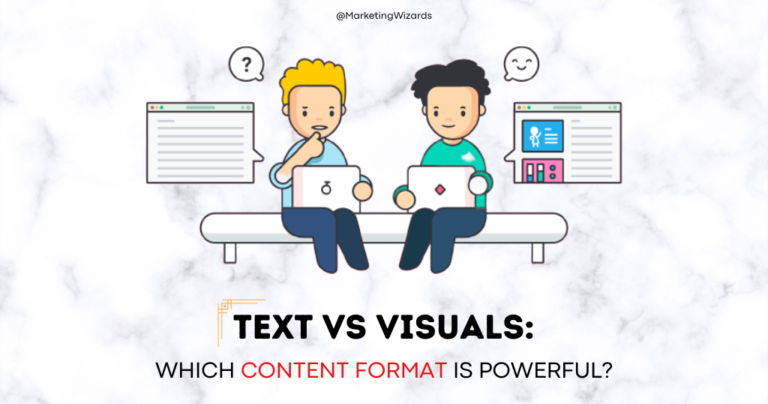
The data indicates that incorporating visual content is vital for a prosperous content marketing approach. Integrating visual elements into marketing efforts can enhance audience interaction, boost social sharing, and ultimately result in greater returns on investment (ROI) for companies.
Benefits of Using Visuals in Content Marketing Strategy
Using images in your content marketing plan can also help you communicate difficult information more effectively and swiftly. A well-designed infographic, for example, can offer a great quantity of data in a visually appealing and easy-to-understand format. Visuals can also help you connect emotionally with your audience because they can elicit strong feelings and emotions.
By including graphics in your content, you can enhance engagement, reach a larger audience, improve brand awareness, and raise conversion rates.
Improved Engagement Rates
Visuals attract more attention than text alone and can help enhance audience engagement. This is because people digest visual information faster and more efficiently than words, making it easier for them to comprehend and recall the information you’re presenting.
Visual content marketing is an effective strategy for engaging your audience and increasing engagement rates. There are various strategies you can use to accomplish this. To begin, create visuals that are both visually appealing and relevant to your business and message. Second, generate valuable, interesting, or informative shareable material.

Make it simple for people to post content on social media networks. Use graphics to tell a story that emotionally connects with your audience. Make your visuals plain and straightforward. Avoid overloading them with information or distracting factors. Finally, utilize captions and descriptions to offer context and information.
Increase Audience Reach
When you include visuals in your content, you increase the likelihood that people will share and engage with your content, which can help expand your audience reach. Visuals are also more likely to be shared on social media platforms, which can help you reach new audiences and increase your brand’s visibility. Increasing engagement rates is critical for the success of visual content marketing.
Engagement rates are a measure of your audience’s interaction with your content, and they may have a significant impact on its efficacy. If your audience is engaged with your visual content, they are more likely to take action and share it with others, improving brand awareness, website traffic, and sales.
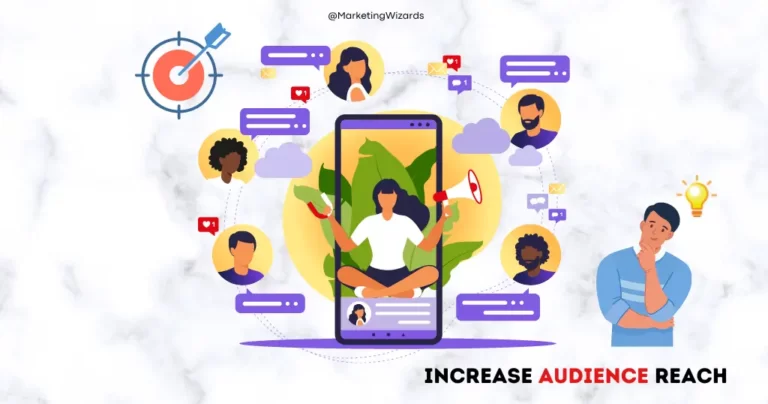
There exist multiple strategies to enhance engagement rates in visual content marketing. Firstly, utilizing high-quality images that align with your brand and message can effectively captivate your audience and create a positive initial impact. Additionally, offering compelling, entertaining, or informative content that is shareable can encourage your audience to distribute your material across social media platforms, leading to enhanced engagement and a broader reach.
Enhancing Engagement Through Compelling Visuals
Using pictures to deliver an emotional story to your audience can help you connect with them more deeply and enhance engagement rates. Fourth, keeping your pictures simple and easy to comprehend might help to minimize confusion and encourage your audience to interact with your information. However, adding captions and descriptions to give context and information can help your audience understand the message you’re attempting to deliver.
You may produce compelling visual content that resonates with your audience by utilizing high-quality images, sharingable material, telling tales, keeping visuals simple, captioning, introducing humor, and promoting user-generated content. This will result in improved interaction, brand exposure, and growth.
Improve Brand Recognization
Improving brand recognition is critical for an organization’s success. To do this, firms must establish a consistent brand identity, provide meaningful content, engage their audience on social media, use influencer marketing, invest in targeted advertising, attend industry events, and prioritize the customer experience. Businesses that adopt these methods may position their brand as an industry leader, enhance brand recognition, and achieve long-term success.
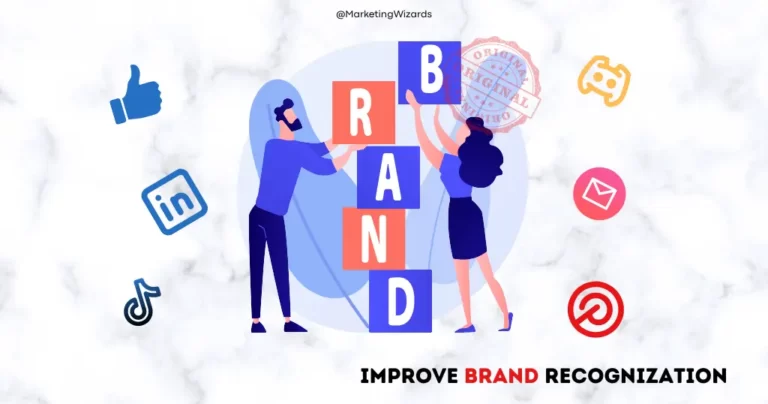
By using visuals consistently in your content marketing, you can improve your brand recognition and help people associate your brand with certain colors, fonts, and imagery. This can be especially helpful if you’re trying to establish a unique brand identity in a crowded market.
Increased Conversion Rates
When you use visuals strategically in your content, you can help guide your audience toward taking a specific action, such as making a purchase or signing up for a newsletter. Visuals can help make your calls-to-action more eye-catching and compelling, which can ultimately lead to increased conversion rates.

Increasing conversion rates is vital for businesses to turn website visitors into paying customers. Businesses can achieve this by optimizing website design, using persuasive copywriting, implementing social proof, offering incentives, using retargeting ads, simplifying forms, and personalizing content. These strategies can help businesses increase their website’s effectiveness and drive more conversions.
Types Of Visual Content
Visual content is an effective way for firms to communicate with their target audience. Visual content may be utilised in a variety of content marketing tactics, including:
- Images – photographs, graphics, and illustrations
- Videos – short clips or longer form content
- Infographics – visual representations of data and information
- Memes – humorous images with captions
- GIFs – short, looping video clips
- Live Streams – real-time video content
- Interactive Content – quizzes, polls, and games
- Presentations – visual aids for speeches or lectures
- Ebooks – longer form content with visuals and text

Every form of visual content possesses distinct advantages and can effectively captivate audiences through various means, contingent upon the objectives of the content marketing approach.
In general, enterprises are presented with a diverse array of visual content options to consider in formulating their marketing strategies. Through the careful selection of suitable visual content types, enterprises can adeptly connect with their audience and realize their marketing objectives.
Implementing a Visual Content Strategy
So, now we’ll get into the most important aspect of this article: the installation of visual content. Analyzing and changing your approach based on performance indicators can enable you to improve your content and achieve your objectives.
Step 1: Defining the Goals and Target Audience
The first step in creating a visual content strategy is determining your objectives and target audience. This involves deciding what you want to achieve with your content and who you want to target.

Your objectives may be to raise brand awareness, create leads, or boost sales, and your target audience may be determined by demographics, interests, or behavior.
Step 2: Choosing the Right Visual Content Formats for the Audience
Upon delineating your objectives and identifying your target demographic, it becomes imperative to opt for suitable visual content formats tailored to your audience. These formats encompass a spectrum ranging from images, videos, infographics, to interactive content.
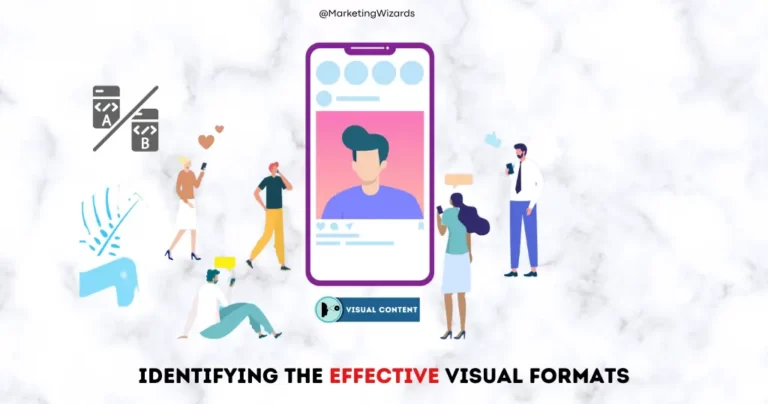
Deliberation should be given to the preferences of your audience regarding formats, as well as the efficacy of each format in realizing your predetermined objectives.
Step 3: Creating High-Quality Visual Content
The next stage is to generate high-quality graphic material that reflects your objectives and target audience. This involves employing high-quality photographs and videos, designing visually attractive pages, and ensuring that your material is simple to read.
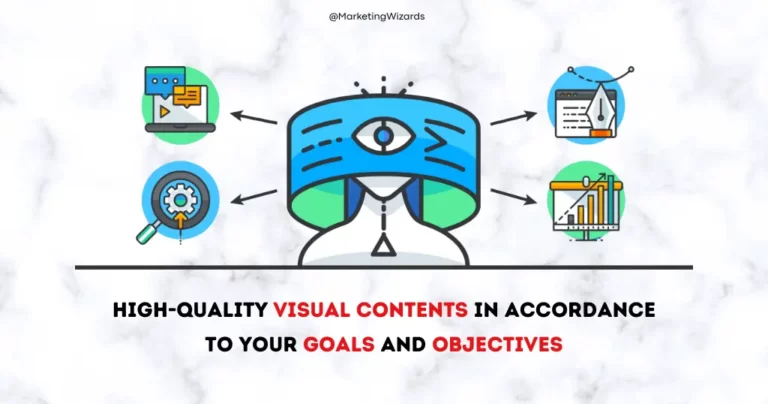
Step 4: Promoting Visual Content
After creating your visual content, you need to promote it to your target audience. This could include sharing it on social media, featuring it on your website or blog, or including it in email marketing campaigns. The key is to promote your content where your target audience is most likely to see it.
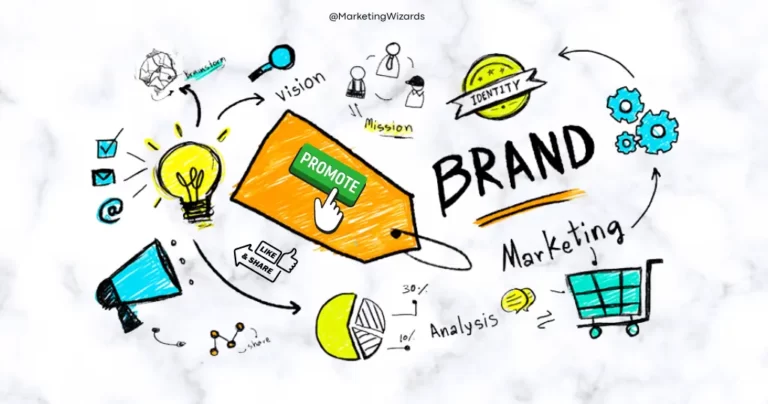
Step 5: Analyzing Strategy Based On Performance
The final stage is to evaluate the effectiveness of your visual content strategy and make any necessary adjustments. This involves measuring metrics like engagement, reach, and conversion rates and using this information to influence future strategy decisions.

You can maximize the efficacy of your visual material by continuously analyzing and changing your strategy.
Conclusion
Finally, visual material is vital in content marketing since it engages and entertains the audience. Visuals may assist in raising brand recognition, engagement, and conversion rates. Businesses may use this method to communicate with their target audience while also standing out in a cluttered digital market.
While creating a visual content strategy, it is critical to set your goals, select the appropriate visual formats, generate high-quality content, promote your content, and monitor your performance to fine-tune your plan.
By following these steps, businesses can create a successful visual content strategy that resonates with their audience and achieves their marketing objectives. Overall, it is an essential component of any content marketing campaign, and businesses should invest in it to succeed in today’s digital world.
Suggested Read
Unlocking the 5 Hidden SEO Secrets for Google Ranking!
7 Effective Ways To Rank A New Website In 2024 (Step-by-Step)
- Get Access to 25+ Free SEO Toolbox Pro by Marketing Wizards
If you find this article helpful, please notify me by leaving a comment. I’d love to hear your thoughts!
Stay tuned, and good luck!





